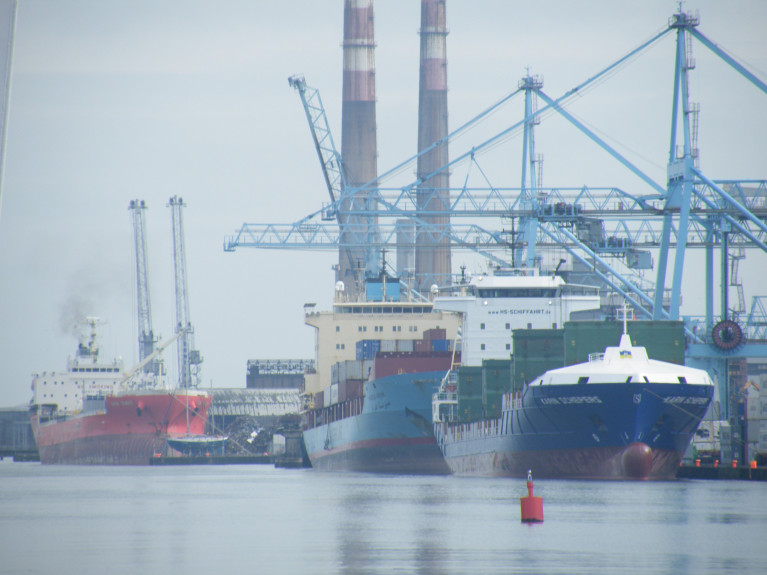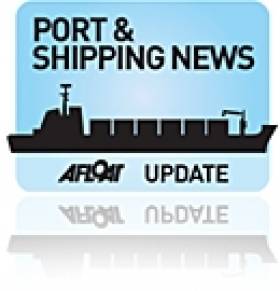Displaying items by tag: CSO
Export of Goods from Ireland Increased 31% in First Half
New Central Statistics Office figures show the value of goods exported from Ireland rose by 31% in the first half of the year.
In total, goods worth €105bn were exported, up by €24bn on the same six-month period last year.
On an unadjusted basis, goods exports were 19% higher in June versus a year earlier. But when seasonally adjusted, exports actually fell by 9% during the month to €16.5bn compared to May.
The biggest recorded increase in exports was seen in the medical and pharmaceutical products sector, where there was 14% growth in the month, worth €788m.
Also growing strongly was the professional, scientific and controlling apparatus sector, which recorded a 51% increase to €909m.
As for imports, RTE News continues the story on trading figures released from the CSO.
Exporters from Ireland selling into the key UK market may be weathering the disruption caused by the new Brexit border on the Irish Sea, even as imports from Britain are down sharply, new CSO figures suggest.
At €3bn, goods exports to Britain for the first three months of the year were down by only 3% from the same period in 2020, despite the disruptions to trade and truck movements at Irish Sea ports.
Exports of food and live animals to Britain accounted for part of the decline – sales across the Irish Sea fell to €648m from €871m in the same period in 2020.
Food and live animal export sales were also down to EU countries, to €855m from €914m a year earlier.
However, the CSO figures show a sharp fall, by €2bn, across a wide range of imports from Britain, down by €2bn to €2.2bn in the first quarter.
Further reading from the Irish Examiner
Dip At Irish Ports Recorded for Pre-Covid Traffic Levels
A decline in Irish Ports traffic even before the coronavirus pandemic hit our shores, new figures from the Central Statistics Office show.
The main ports in the State handled 12.8 million tonnes of goods in the final three months of 2019, down 3.7 per cent compared to the 13.3 million tonnes recorded in the fourth quarter of 2018.
On an annual basis, ports handled 53.2 million tonnes of goods in 2019, a decrease of 3.4 per cent compared to the 55 million reported a year earlier.
Goods forwarded from Irish ports totalled 17.8 million tonnes last year, while 35.4 million tonnes of goods were received.
The number of vessels arriving in Irish ports in 2019 fell by 2.4 per cent with the gross tonnage of arriving vessels up 5.4 per cent to 278.8 million tonnes.
For further details on Dublin Port figures, The Irish Times reports.
Rise of 3.3% In Goods Handled - In and Out - of Irish Ports
Figures released from the Central Statistics Office reveal that Irish ports handled 55.1 million tonnes of goods last year, an increase of 3.3% on the previous year.
Total goods forwarded from Irish ports, RTE News reports, amounted to 18 million tonnes, a slight increase of 0.8% when compared with the previous year.
A total of 37.1 million tonnes of goods were received in 2018, an annual increase of 4.5%.
The CSO noted that Dublin port accounted for 59.3% of all vessel arrivals in Irish ports and 47.8% of the total tonnage of goods handled in 2018.
The routes between Dublin and three UK ports - Holyhead, Liverpool and Milford Haven were the busiest routes for inward movement of goods last year.
More on Irish ports can be read here.
#CSOportStats – Port Statistics for 2013 have been released from the Central Statistics Office (CSO) which show their analysis on Irish Ports which handled more traffic when compared to 2012.
The annual analysis also shows that the number of vessels arriving in Irish ports during 2013 increased by 1.1% to 11,940.
The routes between Dublin and three UK ports – Milford Haven (oil products only), Holyhead and Liverpool were the busiest routes for inward movement of goods in 2013. These accounted for nearly one quarter of the total weight of goods received. The Dublin-Liverpool and Dublin-Holyhead routes were also the busiest routes in terms of goods forwarded.
For much more in-depth analysis of the CSO figures, visit this LINK.
Weak International Demand sees Fall of 10% on Irish Exports
#IrishExPORTS – A weak international demand has seen a fall of 10% on the value of Irish exports during the month of February.
New figures from the Central Statistics Office (CSO) indicate exports decreased by €753 million to €6.65 billion in February compared with the same period last year.
The decline was driven by a 15 per cent (€309 million) fall in exports of medical and pharmaceutical products and an 18 per cent (€286 million) drop in organic chemical exports.
To read more on this story The Irish Times has a report.
































































